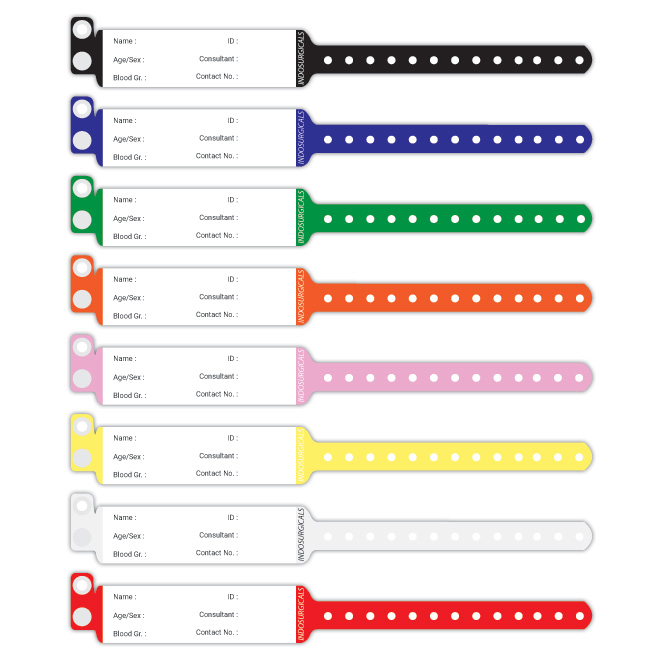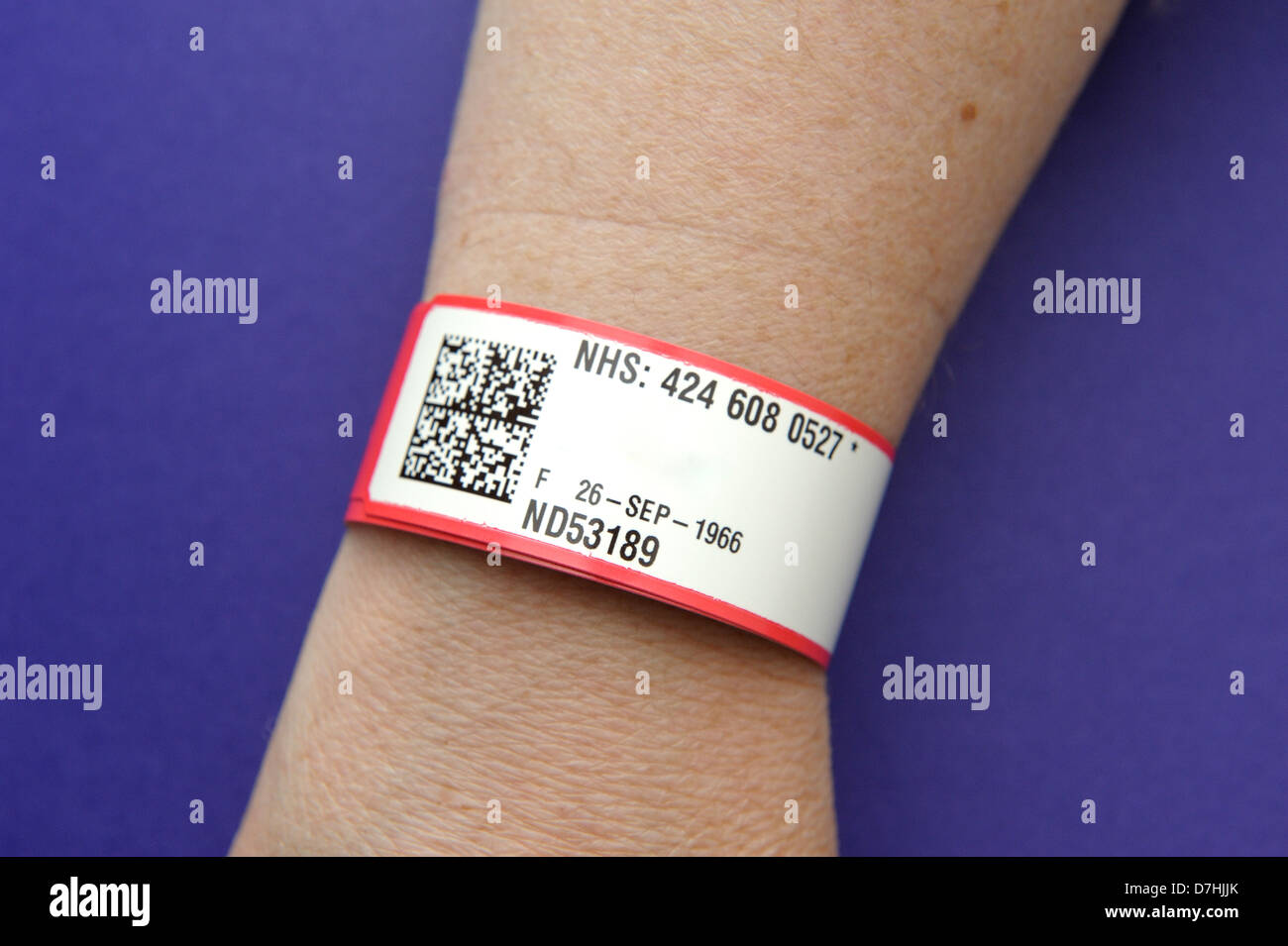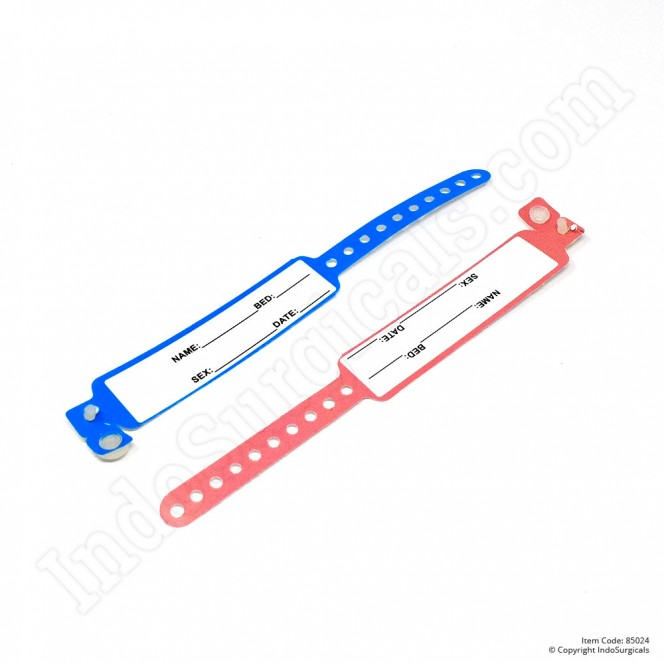How a Patient Identification Band Improves Patient Support and Reduces Risks
How a Patient Identification Band Improves Patient Support and Reduces Risks
Blog Article
A Comprehensive Overview to Patient Identification Band as a Vital Medical Supply
In the substantial landscape of healthcare, Patient Identification bands have arised as a vital device (patient identification band). These bands, teeming with essential data, work as the very first line of defense versus clinical mistakes and make certain smooth Patient treatment. As we begin to check out these medical materials comprehensive, we uncover the complexities of their design, use, and influence on Patient safety and security, while meaning the promise they hold for future medical methods
The Function of Patient Identification Bands in Medical Care
The importance of Patient Identification bands in health care can not be overstated. These easy wristbands function as the key approach of making certain Patient identification, lowering the risk of clinical mistakes and improving overall Patient safety and security. They are an important tool in validating a client's identity before carrying out treatments, medicines, or performing treatments. They are commonly color-coded to represent various health and wellness conditions, allergies, or danger variables, enabling fast aesthetic Identification by medical care experts. In the fast-paced, high-pressure world of health care, where human lives are at risk, the benefits of such a simple yet efficient tool are invaluable. Patient Identification bands supply a system of equilibriums and checks, a fail-safe against potential mistakes, and a consistent tip of the specific behind the therapy.
Deciphering the Details on Patient Identification Bands
While they might seem basic at a glance, Patient Identification bands bring essential information that can considerably influence the course of a patient's treatment. These bands generally present the Patient's name, date of birth, and a distinct identifier, such as a clinical document number. Furthermore, the barcode discovered on these bands can be scanned to access the Patient's digital health and wellness document, offering a riches of info to health care companies.
Various Sorts Of Patient Identification Bands: A Closer Look
In the world of Patient Identification, there are several sorts of bands that serve unique purposes. Barcode Identification Bands, RFID Tag-based Bands, and Color-Coded Patient Bands are the main groups - patient identification band. Each type provides special functions and benefits, which will be examined in the adhering to areas
Barcode Identification Bands
Supplying a considerable renovation in Patient security, barcode Identification bands have become a vital tool in the clinical area. These bands shop critical Patient information in a barcode layout that's swiftly obtainable with a check. Notably, these bands have actually considerably minimized clinical mistakes and boosted Patient safety.
RFID Tag-based Bands
One more cutting-edge approach in Patient Identification is using RFID Tag-based bands. These bands use Radio Regularity Identification (RFID) innovation to provide a protected form of Patient Identification. Unlike barcodes, RFID tags can save much even more info and can be checked out without straight line of vision. This means that healthcare professionals can access vital Patient details, even if the band is obscured by clothing or bedding. RFID tags can be reprogrammed with updated information as required, enhancing their performance. Nevertheless, these bands can be much more pricey than various other forms of Identification, and there are privacy issues connected with using RFID modern technology. Despite these obstacles, RFID tags provide significant capacity for boosting Patient security and efficiency in health care.
Color-Coded Patient Bands
Color-coded Patient bands stand as a simple yet efficient tool in Patient Identification. These bands, prevalent in health centers and centers, utilize various colors to suggest various Patient allergic reactions, risks or problems, making sure prompt acknowledgment by health care professionals. For instance, a red band typically indicates an allergic reaction, while yellow shows an autumn threat. These bands are designed to be easily noticeable and distinguishable, also in high-stress circumstances. This instant aesthetic cue permits timely, accurate care, lowering the possibility for clinical errors. Nonetheless, it's critical that staff are extensively trained in the shade significances, as complication can result in major consequences. Thus, the color-coded Patient band system is a crucial part of Patient safety and security and reliable medical care distribution.

Use of Patient Identification Bands: Procedures and Procedures
In healthcare settings, making use of Patient Identification bands plays a crucial duty in ensuring Patient safety and security and lowering clinical mistakes. These bands, usually made from long lasting, hypoallergenic product, are connected to the Patient's wrist or ankle, displaying important info such as name, date of birth, and a special identifier. The procedure is normally implemented throughout admission, with the info double-checked for precision. For babies, bands are connected to both the infant and mom to protect against inequalities. In elderly care, two bands may be link used for patients with dementia to make certain correct Identification. Complying with these methods aids to prevent Patient misidentification, a precursor to major medical mistakes. This technique is a testimony to the crucial nature of Identification bands in Patient treatment.
The Influence of Identification Bands on Patient Safety And Security
Identification bands play an important duty in maintaining Patient safety and security in medical care settings. Their use can considerably decrease medical mistakes by making certain that the appropriate Patient receives the appropriate treatment. These basic devices add to improving the top quality of care by offering an extra layer of confirmation to Patient identities.
Decreasing Clinical Errors
An incredible variety of medical errors, estimated to be in the numerous thousands each year, can be traced back to misidentification of patients. These mistakes lead not just to damage to the Patient however also result in costly legal and reputational damages to the medical care institution. Patient Identification bands have actually become an indispensable device in dramatically lowering these mistakes. They give an easy, yet efficient, technique of properly recognizing patients. Most importantly, these bands make certain that every Patient is correctly matched with their clinical documents, tests, and therapies, therefore dramatically lowering the danger of clinical mistakes. By making certain exact Patient Identification, these bands add to improved Patient security, building trust and self-confidence in the medical care system.
Making Sure Appropriate Therapy
Guarding Patient safety, Identification bands play a crucial duty in making certain the appropriate administration of therapies. They use an easy yet effective approach for properly identifying people and matching them to their medical records. This reduces the threat of treatment errors, particularly in high-pressure situations where blunders can have serious consequences. These bands include vital details such as the Patient's name, date of birth, and special Identification number. They help with exact cross-referencing with electronic health and wellness documents, prescription orders, and procedural routines. In effect, the possibility of misdiagnosis, medication mistakes, or patient identification band step-by-step mix-ups is significantly minimized. Essentially, Patient Identification bands act as a critical guard in the health care setup, dramatically adding to Patient safety and making sure correct treatment.

Enhancing Quality Treatment
While they may appear unimportant, patient Identification bands significantly enhance the high quality of treatment provided in healthcare setups. They are a necessary device in making certain Patient security due to their ability to provide immediate accessibility to essential details. The fostering of Patient Identification bands is, for that reason, a needed procedure in all health care environments.
Exploring the Future of Patient Identification Bands in Clinical Practice

Conclusion
Patient Identification bands play an essential function in medical care, guaranteeing precise Patient Identification and reducing medical errors. As clinical techniques continue to progress, Patient Identification bands will stay a vital component of the healthcare system.
While they might appear basic at a look, Patient Identification bands carry important details that can significantly impact the program of a patient's treatment.Color-coded Patient bands stand as a basic yet effective device in Patient Identification.In healthcare settings, the use of Patient Identification bands plays a critical function in making sure Patient safety and decreasing medical errors. In significance, Patient Identification bands serve as an important secure in the healthcare setup, dramatically contributing to Patient safety and making certain appropriate treatment.
Patient Identification bands play an important function in health care, guaranteeing accurate Patient Identification and minimizing medical errors.
Report this page